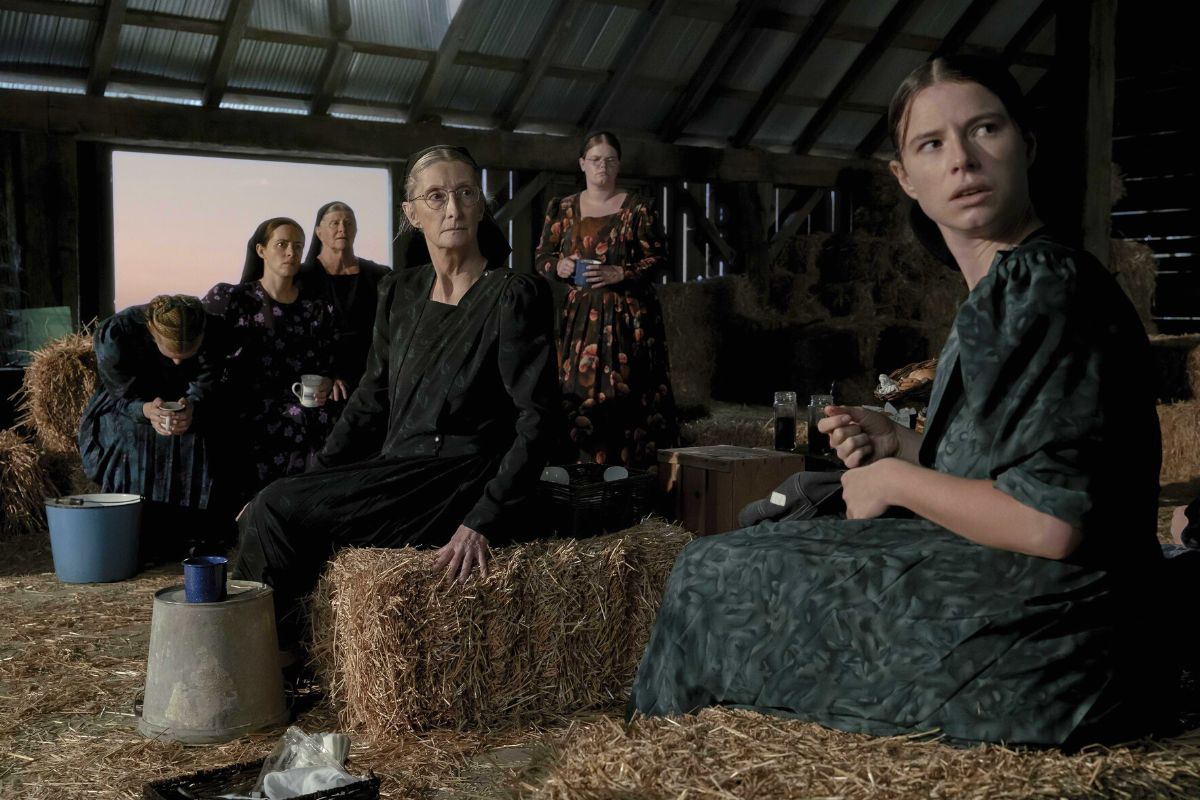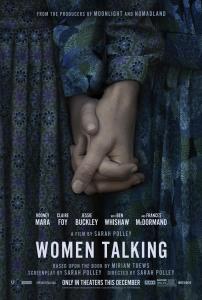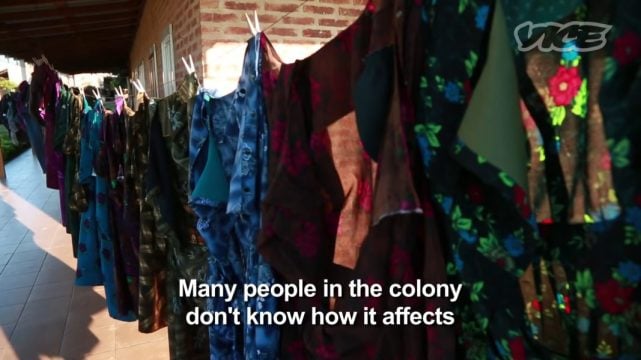The True Story That Inspired ‘Women Talking’

Content warning: sexual assault
One of the buzziest movies for cinephiles and people following the work of women directors is Sarah Polley’s Women Talking. The story follows women in a religious fundamentalist group, who come together to decide what path they should take when men in their community are found sexually assaulting (mostly) women and girls in the dead of the night. Based on the 2018 novel of the same name, this story mirrors the beginning of similar events that took place in a Manitoba Mennonite Colony in Bolivia.
From 2004 to 2009, dozens of women in a Mennonite community woke up covered in body fluids, with grass, dirt, and other disturbing evidence on their bodies. Some of the victims, who were between the ages of three and 65, reported seeing men hovering over them in the middle of the night. The all-male leadership deemed their accusations baseless. They claimed that all of the victims were hallucinating and/or it was the work of the devil, even though some of the women were impregnated. The violence continued until one night in 2009, when a group of men was caught.
The Bolivian government gave a blanket exemption for this colony to police themselves, except in the case of murder. So, the colony leaders held the perpetrators in shipping containers while they worked on building the colonies’ first jail. Word reached the local non-Mennonite authorities and they came in to arrest the men. This is where Miriam Toews’ 2018 novel—and Sarah Polley’s 2022 film—Women Talking begins. The women of the colony have 48 hours before the men post bail. Here, they try and decide how to approach the situation now that the secrets are known to everyone. Do they run, stay and fight, or continue in silence?

Microcosm of issues
While the perpetrators are responsible for the violence inflicted on the women of this Mennonite community, the leaders who created this environment are also to blame. This mass rape was not the first incidence of sexual assault in the community. However, in the past, if the crime was acknowledged by the accused, victims were required to forgive and move on. Otherwise, elders warned that God would punish them. Leaders also threatened ex-communication and banishment of victims and their families. As previously outlined, the government would almost never step in. Doing so would break the contract, and the community would move to a different location, like it did in the past.
First coming from mainly Eastern Europe (modern-day Germany) and forming during the Protestant Reformation in the 1500s, this Mennonite group fled from Russia in the 1800s to Canada, then Mexico, and then Bolivia by the 1950s. The steady pattern of migration comes from fear of (and sometimes actual) religious persecution and resistance to social integration. For example, the Mennonites moved out of Canada and Mexico when the respective nations required all children to attend public schools. (This was sometimes cited as “persecution.”) Mennonite leaders believed in gender-based schooling until 12 (13 for boys) and did not prioritize members learning the language beyond the “low” German and Dutch dialects, regardless of the country they were in. This is not too dissimilar from the original Mayflower pilgrims.
This accord, with an exemption from military service and basically micronation-esque self-rule, might seem like a weird artifact of colonial times (or Utah history). That’s kind of the point. The Mennonites’ ultra-conservative values seek to hold onto every part of the past. Welcoming certain Europeans benefits these nations to an extent. After all, the contemporary racial and ethnic makeup of Canada, Mexico, and Bolivia wouldn’t exist today without colonialism and the lingering influence of José Vasconcelos La raza cósmica politics.
Violence continues post-trial
The subsequent trial by Bolvian authorities revealed that at least eight men used livestock anesthetic (provided by another man, convicted on different charges) to knock their victims out. Over 130 people came forward in some manner to the Bolivian police. Averaged out, this means that 50 percent of every household had at least one victim. However, reports have all found that in talking with the community, this is just a fraction of the actual victims. Those who didn’t come forward believed one more story wouldn’t change anything and feared the repercussions that came with speaking out. This is all too familiar to anyone who’s followed one or more cases of mass abuse in any nation. After the trial and sentencing, Mennonite leaders “encouraged” the community to move on and insisted that the problems were over.

While the community leaders insisted to Bolivian officials and others that the incident was the extent of the harm that required help from outside authorities, the violence never stopped. Publications from around the world began to ask questions and sought the voices of the victims. VICE released a two-part documentary in 2013. The reporter in the documentary, Jean Friedman-Rudovsky, published a lengthy article about her time in the colony and exposed more violence. For example, as with the other crimes that occurred before 2004-2009, the church elders recommended that people just move on and forgive.
Friedman-Rudovsky found that the assaults were worse than previously believed. While these men were terrorizing the community as a group for a number of years, sexual abuse is very common. Additionally, leaders ignored victims of incest. In one case, it wasn’t “just” one or two people assaulting young family members; it was passed down like an unspoken tradition. Elders would focus on the disapproval of a family owning a car or using modern amenities instead of the crimes of sexual assault and grooming. The Mennonite community that attracted the world’s attention held 2,000 members, but the larger network in Bolivia includes more than 500,000.
How Women Talking tells that story
In an interview with the PBS NewsHour’s Jeffrey Brown, director Sarah Polley explained that the film is told as a fable. The setting and story have this heightened reality to allow for a direct allegory. The details are blurred so as to not be exactly like the case. As previously stated, the story is focused on the time when the community leaders posted bail for the men arrested by state authorities. The movie/book is about a group of women deciding what to do next and questioning everything they thought they knew. When PBS asked about taking the story out of its original context, Polley said:
This is not limited to women in this particular sect. I mean, certainly, there’s an extremity and a horror that happened in this community that it’s easier for that to happen in an isolated community where there’s no contact with the outside world. And where there’s such a hierarchical power structure. But I also just didn’t want to give people permission to say, “these are only issues that people are dealing with in these kinds of communities” because of course we’re dealing with them every day in our own.
The film is still showing in select theaters and is also available to rent or buy on most major streaming services.
(featured image: MGM)
Have a tip we should know? [email protected]
